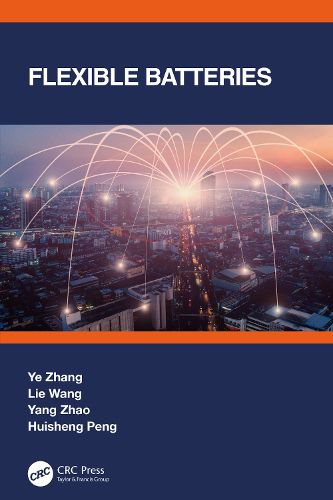Readings Newsletter
Become a Readings Member to make your shopping experience even easier.
Sign in or sign up for free!
You’re not far away from qualifying for FREE standard shipping within Australia
You’ve qualified for FREE standard shipping within Australia
The cart is loading…






Flexible Batteries highlights the key advances in flexible batteries, a booming new direction in the energy storage field.
The authors first introduce lithium-ion batteries, which are currently the most widely used batteries. Flexible aqueous batteries such as aqueous lithium-ion, sodium-ion, and zinc-ion batteries are discussed subsequently due to the safety concerns in organic electrolytes. Since flexible metal-air batteries are recognized as primary choices for the next generation, the authors take lithium-air and aluminum-air batteries as examples to explore their applications in flexible battery construction. They further summarize flexible batteries under the most challenging working conditions such as stretching and integrating flexible batteries with flexible energy harvesting devices, sensors, and supercapacitors.
Covering both fundamental and application development, this book may effectively bridge academics and industry. It will be helpful not only to scholars and students studying materials science and engineering, chemical engineering, physics, energy science, and biomedical science but also to scientists and engineers in the industry.
$9.00 standard shipping within Australia
FREE standard shipping within Australia for orders over $100.00
Express & International shipping calculated at checkout
Flexible Batteries highlights the key advances in flexible batteries, a booming new direction in the energy storage field.
The authors first introduce lithium-ion batteries, which are currently the most widely used batteries. Flexible aqueous batteries such as aqueous lithium-ion, sodium-ion, and zinc-ion batteries are discussed subsequently due to the safety concerns in organic electrolytes. Since flexible metal-air batteries are recognized as primary choices for the next generation, the authors take lithium-air and aluminum-air batteries as examples to explore their applications in flexible battery construction. They further summarize flexible batteries under the most challenging working conditions such as stretching and integrating flexible batteries with flexible energy harvesting devices, sensors, and supercapacitors.
Covering both fundamental and application development, this book may effectively bridge academics and industry. It will be helpful not only to scholars and students studying materials science and engineering, chemical engineering, physics, energy science, and biomedical science but also to scientists and engineers in the industry.